The Debaculous Fiasco of Dr. Seuss
Once upon a time, Dr. Seuss, world-famous children’s book author and illustrator, went to Hollywood and made a movie called THE 5000 FINGERS OF DR.T.
(His real name is Theodor S. Geisel, which I first learned because his nephew went to my High School.)
Dr. Seuss was responsible for the story, screenplay, lyrics, and set design. Unless Salvador Dali did the set design; hard to tell.
The good doctor was not at the peak of his fame, and so his name was not given top billing. This was before he wrote Horton Hears a Who! (1955), If I Ran the Circus (1956), The Cat in the Hat (1957), How the Grinch Stole Christmas! (1957), or Green Eggs and Ham (1960).
The music was by Frederick Hollander (a then-famous but unfairly forgotten great composer of the day) and won the 1953 Academy Award for ‘Best Scoring of a Musical Picture’.
This film was not, as it might seem, a sequel to THE MILLION EYES OF SUMARU or other films concerning monstrous person with excessive body parts.
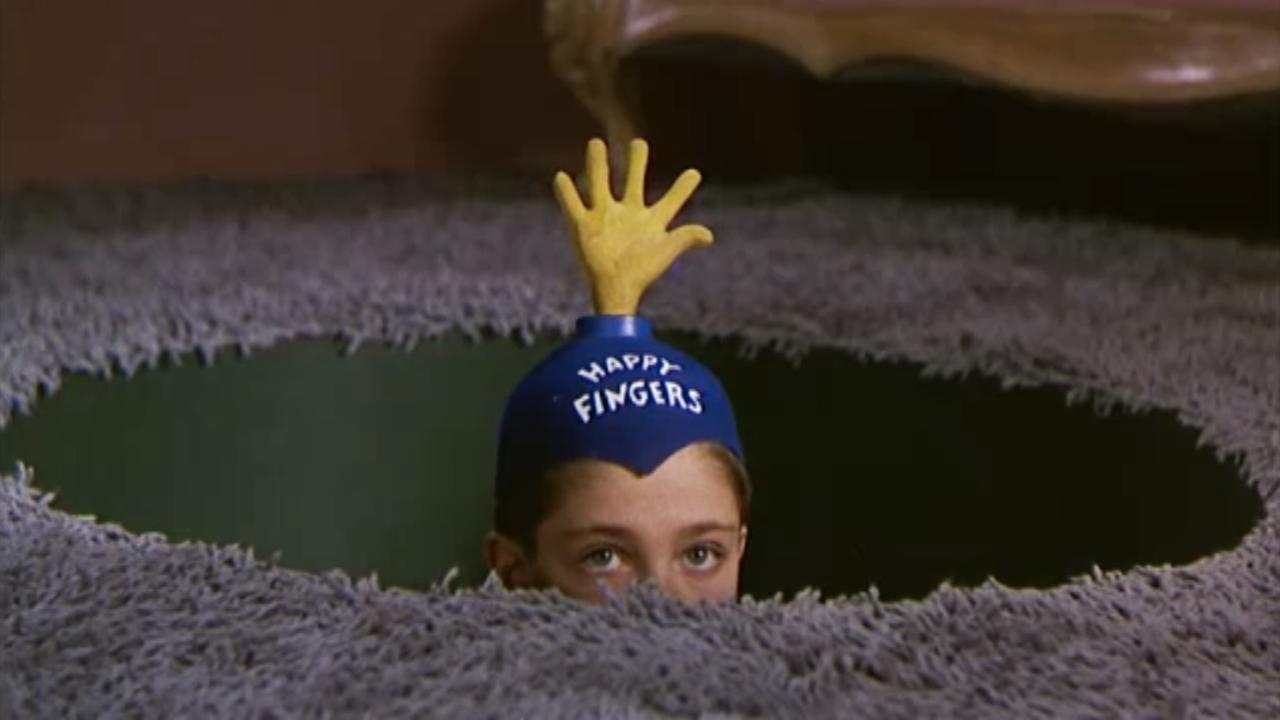
It is a story of one Bartholomew Collins, a young boy wearing a beanie with a hand on top kept in a surrealistic musical school and prison guarded by an army of singing thugs and a pair of rollerskating Siamese Twins connected by their beard.
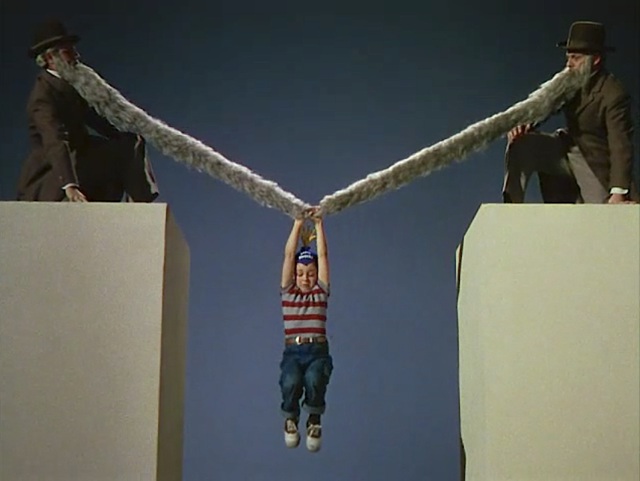
The institute is run by the ruthless yet maniacal Dr. Terwilliker, who is keeping all other musicians aside from piano players in a dungeon.
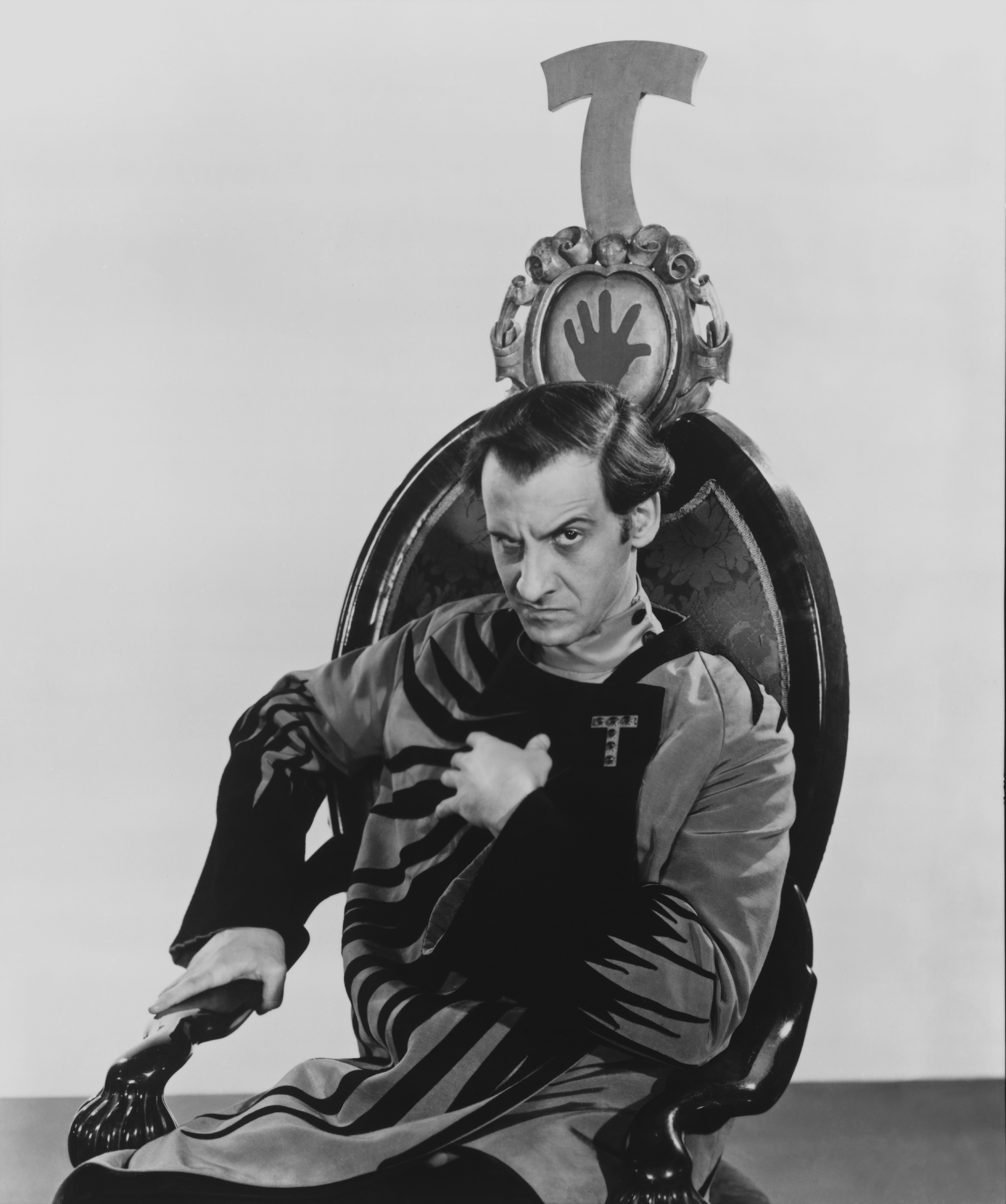
He plans to force 500 little boys to practice piano endlessly on a monstrous five thousand key piano, and then use the disintegration ray in his physics laboratory to disintegrate Gus Zabladowski, the plumber, atom by atom as soon as that unwitting but truehearting workingman is finished installing the last sink.
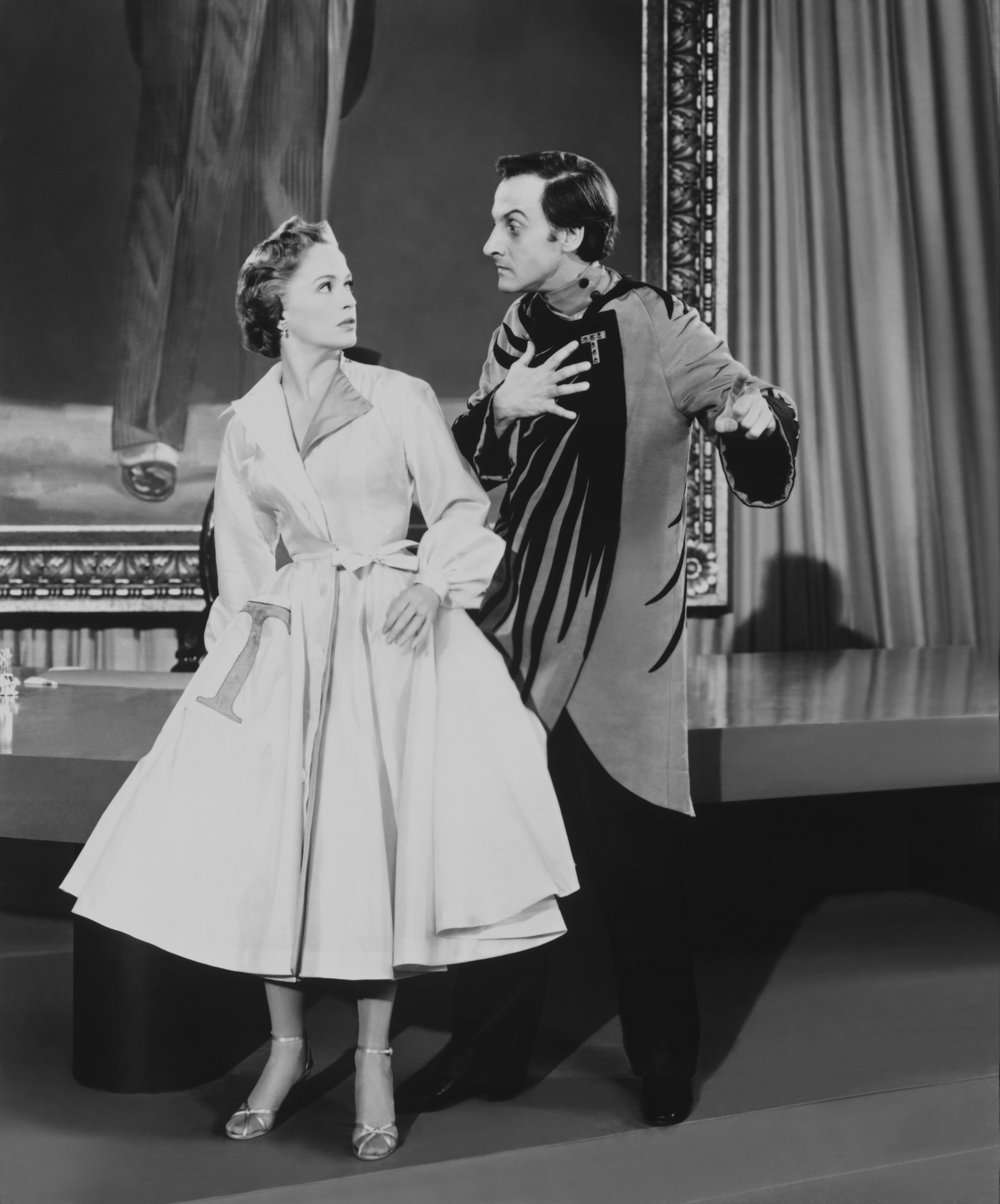
And Dr. Terwilliker has the little boy’s mother, Mrs Collins, hypnotized into serving as his secretary and unwilling fiancee.
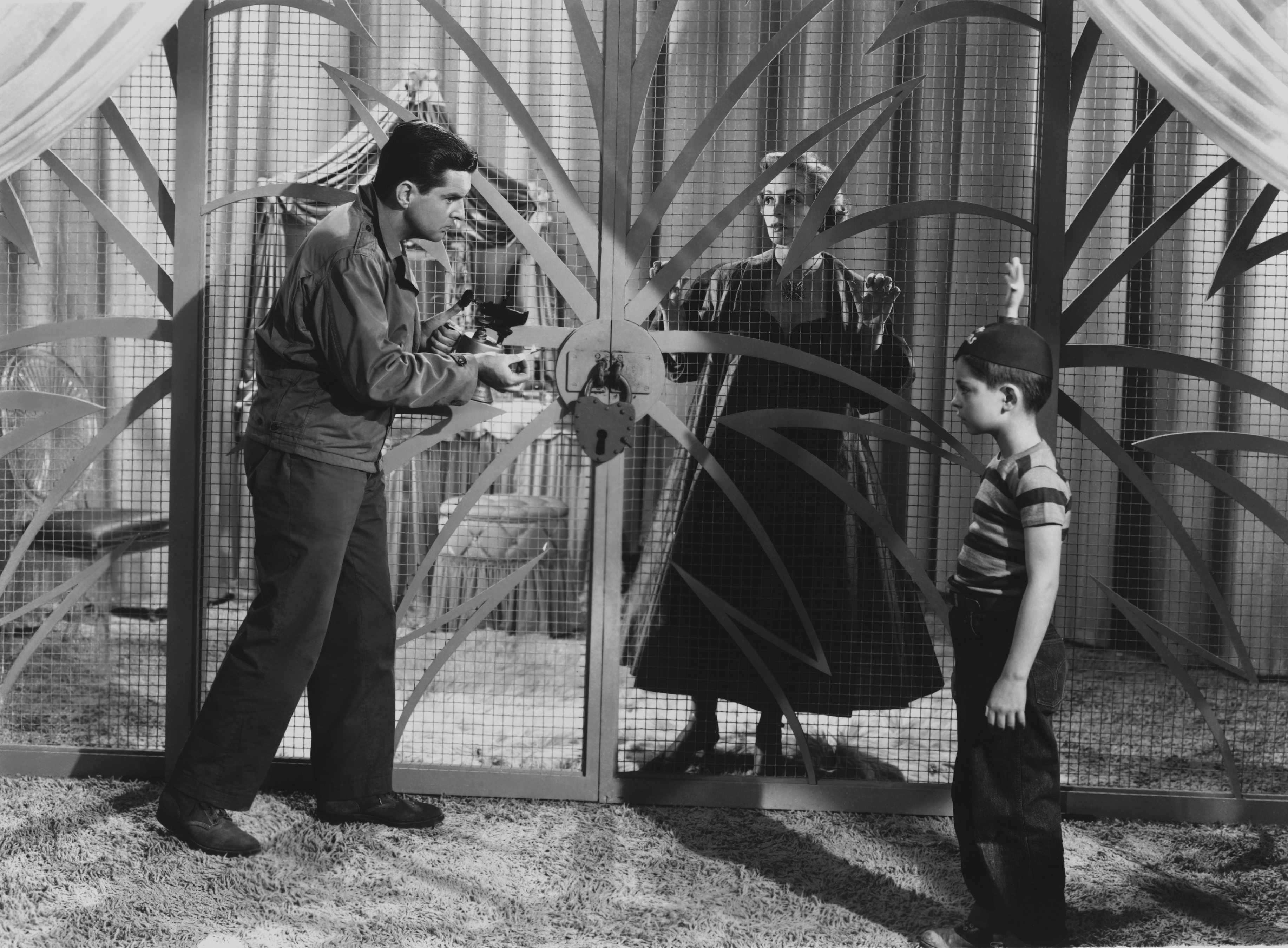
The boy must convince the skeptical plumber of Dr. Terwilliker’s evil plans, and gain his aid to free his mother, and 499 other piano students, and stop the giant piano with an atomic-powered sound-fix, despite being outnumbered and alone with no one to believe him.
And despite being forced to practice finger exercises.
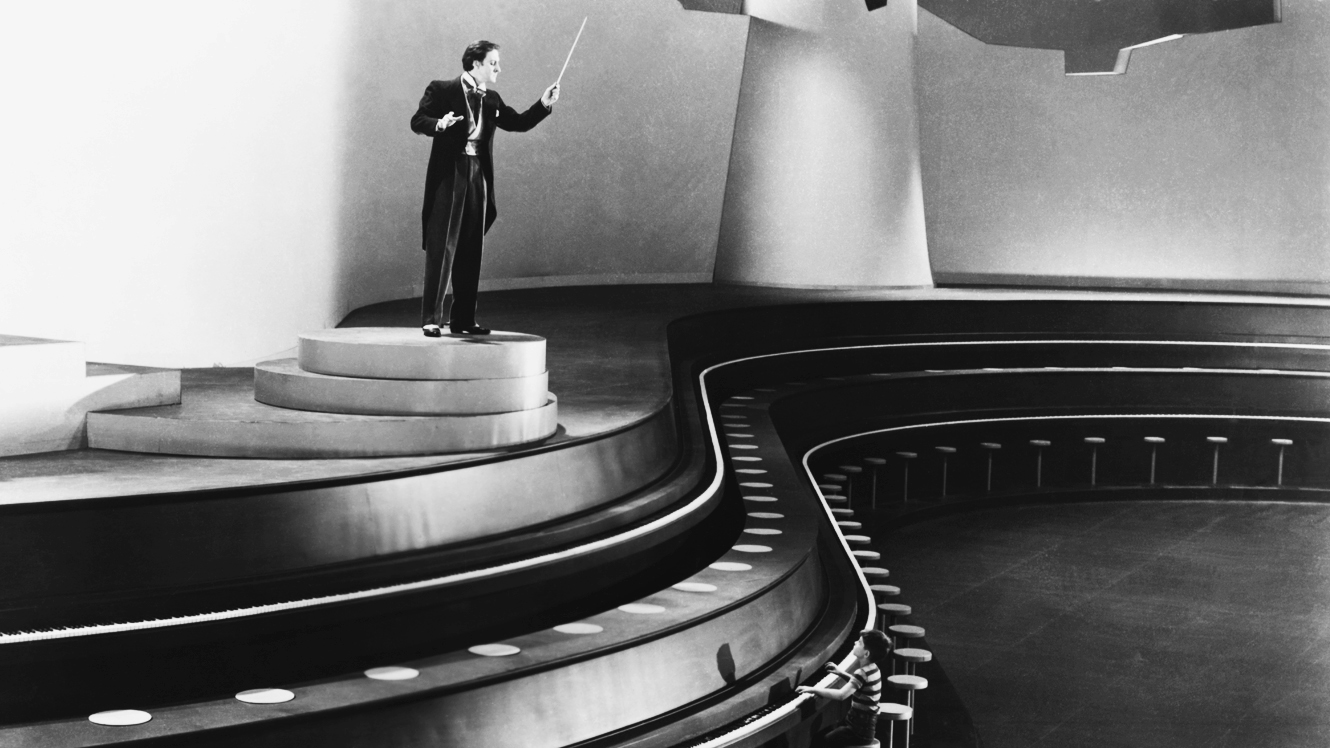
The visuals for this film are striking, perhaps unique. I am not sure if there is a single straight line anywhere. It leaped onto the screen directly from the pages of Dr. Seuss.
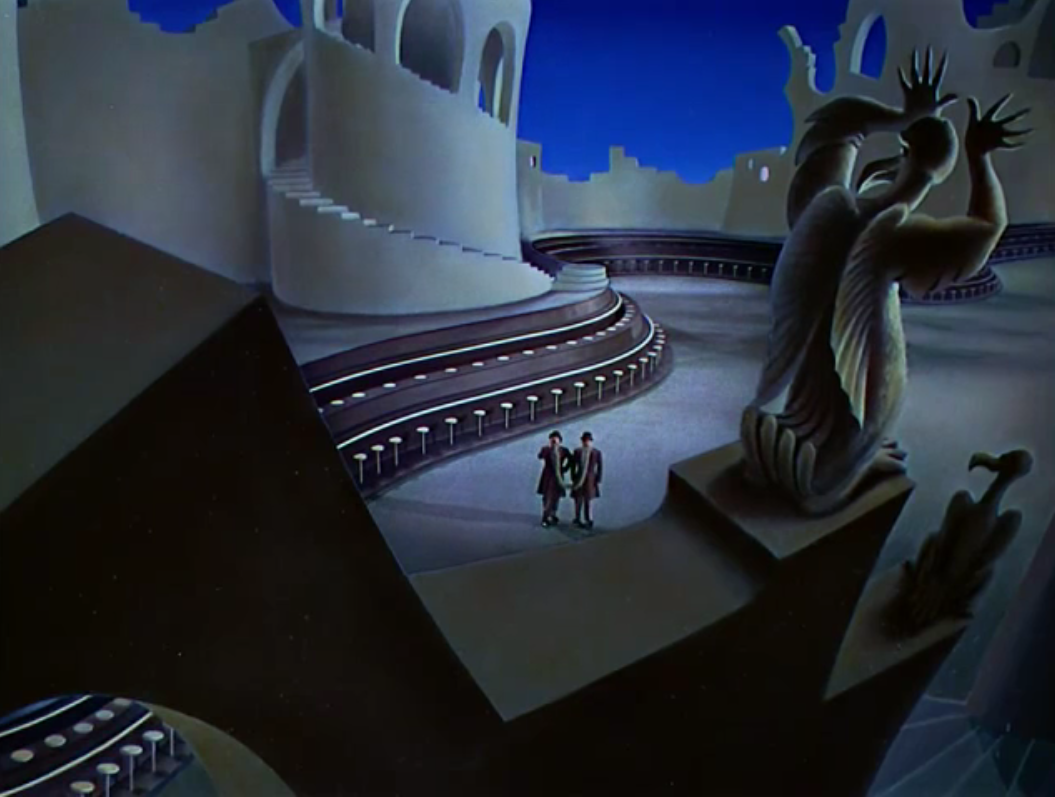
This clip should give you a sense of the dreamlike sense and senselessness of the thing.
I confess I loved this film at first sight. I suppose the appeal is either one of those things where you either get it or don’t, and there is no explaining the appeal to people who don’t get it.
The piano teacher uses a metronome and piano slides to put the whammy on the plumber, who retaliates by using gestures of pipe-fitting. They they do the rumba. What is more natural?
Everything is labeled with huge yellow gloves pointing at things. What could be more natural?

For example, what is more natural than when Jack Ketch is lowering you in an elevator to the bottom level of a dungeon, that he should cry out what each floor holds, just like an elevator operator in a big city Department Store?
I am not old enough to remember department store elevator operators, but I am old enough to remember a generation that did not make it a habit to forget everything about the previous generation, so I, at least, got the joke:
When I was a child, I saw the first half of the film. In those days, my folks lived in southern California, and sometimes when atmospheric conditions were right, if you wrapped a wire hanger around the rabbit ears, you could pick up the television broadcast from Tijuana.
I missed the beginning, coming in on the scene where the wall screens are telling young Bart that practice makes perfect, and that the barbed wire surrounding the institute is electrified!

I saw about to the scene where a drummer is being tortured forever inside a giant drum, and the orchestra is playing bizarre instruments only Dr. Seuss could dream up, including a cymbal worked by a man on the flying trapeze.

That was when the static overwhelmed the picture, and preventing me from seeing the ending.
Naturally, I was curious for years, with that particular poignant curiosity felt only by those who encounter a fragment of an unfinished story.
Time passed, and the Space Age ended, the Information Age begin, and I bought a copy of the film to show my kids, and they are as weird as I am and got the film as I do.
In watching this movie, one must understand two things. First, that Dr. Seuss is a mad genius on the order of Jack “King” Kirby, and he delights in the sound and rhythm of words whether they make sense or not.
Second, that tyrants and dictators are as self-infatuated as Narcissus, and dress in European splendor like Mussolini, and that the thing is ridiculous, and should be put to music. Here is Dr. Terwilliker on the eve of his greatest triumph, opening his five hundred student grand piano concert.
It is worth noting that none of the articles of clothing mentioned in the lyrics resemble anything he is actually dressed in, except for the purple spats. He does not end up wearing snood, gusset, or a girdle any more than he is wearing a dickey, or, for that matter, is he dressed in spinach and cheese, or pretzels, or beer suds.
He does managed to collect the boys he needs to run his grandest of grand pianos. (One inattentive reviewer thought he kidnapped the boys. Not so. Their parents, deceived by the silver tongued villain, are sending them voluntarily to the prison camp piano camp.)

Not to worry. It has a happy ending: the boy stops the overdressed tyrant by threatening him with a bottle of air-fix that has been gimmicked up to suppress and confound sound. It is not just atomic, it is very atomic.
Then the boy wakes up, and it is all a dream, except that the oath of bloodbrotherhood he exchanged with the plumber still holds.
But I found out more about the film. The story is sad.
Unfortunately, it was released to a test audience, who reacted badly, and the studio cut eleven of the sixteen songs, reshot the opening scenes. The original version is lost.
The butchered version that was released in theaters bombed horribly. Seuss called the film as a “debaculous fiasco” and made no mention of it in his official biography.
The sinister Dr. Terwilliker himself was played by the magnificent Hans Conried, whom you may remember of the voice of Disney’s Captain Hook in PETER PAN, or Snidely Whiplash in the Dudley Do-Right shorts in THE ROCKY AND BULLWINKLE SHOW.

No villain before or since has ever chewed the scenery into smaller bits; he can turn from despotic browbeating to unctuous servility as quickly as Doctor Smith LOST IN SPACE. He can roll a supercilious R with the same aplomb as the Robot Devil from FUTURAMA.
It was the role he was born to play and should have, had this universe treated him fairly, elevated him into more major roles. The poor reception of this film dashed his hopes.
The cut songs and scenes included ones that would have made sense out of what in the released version of the film were senseless things. In the lost original, there was a scene where Dr. Terwilliker was shown hypnotizing Mrs. Collins. In the released version, if I recall correctly, the simply tries to put the whammy on Mr. Zabladowski without it being established than he can do so.
The love song where Mrs. Collins and the plumber Mr. Zabladowski fall in love is also missing, and so, in the released version, the scene jumps from a tentative affection to full-blown romance for no reason.
This song was originally written with Bing Crosby in mind, as he was slated to play the plumber. (Dr. T was originally going to be played by Danny Kaye.)
So at least some of the dream logic and sudden jumps in this dreamlike plot is not due to Dr. Seuss making it dreamlike, but due instead to studio execs pruning unskillfully a two and half hour film to only 90 minutes. That is an hour of film lost.
Somewhere, in a nearby parallel universe, after the success 5000 FINGERS deserved, a group of Dr. Seuss films was made while the author was still alive and at the height of his powers. (And I am not talking about Jim Carey as the Grinch in a version of the story where the Grinch is a misunderstood victim-hero and the Whos down in Whoville are narrow bourgeoisie hypocrites).
Because the execs meddled and 5000 FINGERS bombed, we do not live in that universe, but in this one.
In this universe, unfortunately, the film get reviewed by reviewers who have their heads wedged so firmly into darkness that they cannot speak a coherent sentence about it. Instead, they use is as a Rorschach blot test to speak freely about their own sexual deviance, or their odd hatred for everything from the Cold War Era (a war, which, to this day, they dismiss as paranoia, and will never forgive Reagan for having won).
Such persons do not understand whimsy, humor, or weirdness for the sake of weirdness. They certainly do not understand normal things, such as a desire for a normal family life.
There are several examples. Pardon me if I forebear to link to them.
One reviewer opined that Dr. Terwilliker was meant to portray a homosexual and a pederast, on the grounds that he dresses in extravagant clothing, including undulating undies, and that homosexuals dress in extravagant clothing, therefore, um… well, I am not sure what the line of logic is here.
While, in the song, some of the colors and items of clothing do sound like girl’s clothing, such as a peek-a-boo blouse, some are also foodstuffs, and some are made of porcupine or rat. If a reviewer cannot tell the difference between mere foolery for the sake of foolery and secret references to sexual perversions being sneaked into a children’s film, he should avoid reviewing anything to do with Dr. Seuss.
The song immediately following the hypnotic duel is one where Dr. Terwilliker flatters and soothes Mr. Zabladowski by singing about the weather. Zabladowski, of course, is sweet on Mrs. Collins, and sings about ‘briding and grooming’ to her, i.e., about falling in love; she sings running and shouting; whereas Dr. T sings about zooming and zooping and bipping and bouncing, not to mention schlopping and schleeping.
Dr. T asks Mr. Z to dance, and this is allegedly a give-away of hermaphroditism, or something, rather than being, you know, a joke because men do not ask men to dance.
This convinced one reviewer that this scene represented a three-way sexual congress between them. And since, once Dr. T asks, he gestures for the hypnotized Mrs. C to come sit next to Mr. Z, it is pretty clear he means her to confound him with her romantic allure, and drive all suspicion from his mind (which, in fact, is what happens.) But not too romantic, since it is actually his own hypnofiancee he villain is using. If you look, you can see Mr. Z dips his head toward the satin-garbed Mr. C as if to steal a kiss and Dr. T draws him back. The meaning of the scene is hardly opaque.
Apparently if you sing to a girl about falling in love, and there is another guy in the duet trying to use her to disarm your suspicions, this means you are eager for unnatural sexual acts with him, rather than a natural romance with her.
Also, the fact that Mr. Z and Dr. T are panting and leaning on each other after their hypnosis fight, he took to represent the exhaustion following energetic sodomy, rather than, for example, boxers panting after a bout.
The same reviewer detected no ‘chemistry’ between Mr. Zabladowski and Mr. Collins, even though the actor and actress playing them, Peter Lind Hayes and Mary Healy, in real life were married.
Another reviewer argued that since Jack Ketch in the elevator is depicted as a shirtless man in a hood, this indicated homosexuality.
In real life, real headsmen and torturers so dressed so often that it became a trope. At least back in the 1950s that generation knew enough about previous generations so recognize it as a shorthand visual symbol for a torturer, in the same way putting a crown on a figure indicates he is a king, or putting a red fur hat with white trim indicates he is a Christmas Elf. It is a common figure from the visual alphabet of our culture.

To leer and snicker at a shirtless man as a symbol of homosexuality is merely a kafkatrap: anyone who denies it can be accused of harboring secret homosex feelings himself, hence disqualified (I am not sure why) from having an opinion on what symbols have homosex overtones.
Again, another reviewer opined that the movies was ‘Freudian’ because the boy’s father is dead, and the boy hopes Mr. Zabladowski, who (at least in pretend) takes him on fishing trips, will marry his mother, rather than the peevish, supercilious and tyrannical Dr. Terwilliker.
As I said above, the idea that a orphan boy would like a father is one these reviewers all mention with a kind of squirming impatience, squinting and breathing through the mouth, as if the very idea made them queasy. That the orphan would like a decent father rather than a prissy, blustering, odious and supercilious hypocrite makes them sick: perhaps the theme strikes too close to home.
To them, if a man hugs a little boy, it is homo-pedo-ish, not fatherly.

More than one reviewer interprets Dr. Terwilliker’s dandified vanity, his precise enunciation and large vocabulary, and his being a music teacher rather than a plumber as a sign that he is a sissy, and that therefore the movie is secretly about hatred of homosexuals, rather than, for example, about the fact that little boys generally would rather play ball than play piano, and that little boys do not like being pushed around by grown-ups, or called liars. Even big boys do not like that so very much.
They miss that this is what the film is about, even though Bartholomew’s sole solo number is precisely on this point. The boy laments that he does not like getting pushed around by grown-ups and vows when he is grown not to do the same. It is one of the more touching moments in the film.
Nearly every reviewer mentions ‘Cold War symbolism’ and ‘Cold War paranoia’ and the ‘plethora of postwar fears’ represented even though there is nothing remotely like this in the film. Dr. Terwilliker is not a communist, he is a con-artist.
The end scene, where the boy threatens to blow up a gang of thugs with his atomic bottle of air-freshener does not show paranoia or fear of atomic energy or mutually assured destruction: the atomic energy is unambiguously and absolutely the saving weapon in the scene. Dr. Terwilliker is reduced to sobs of fear and cowed into total surrender.
The fact that it is atomic means about as much, or as little, as the fact that Dr. Terwilliker has a disintegration ray: it is something a typical little boy would dream up as a superweapon to overawe a dastardly villain. Atomic power is in the film because it is absurd that a plumber could make an atomic weapon using only the gear found in his pockets.
No, the only so called Cold War symbolism here is what would be in any fantasy about a little boy facing a villain who rules by equal parts of flattery, brutality, and deceit: the theme has to be about stirring the indifferent to the realization of the true danger. As with the accusation that anyone who overdresses is a homosexual, only someone obsessively angry that the Soviets lost the Cold War thanks to Reagan sees Cold War references and imagery in every story about exposing a deceptive tyrant.
I can only assume all the sneers and jeers of all these, sick, sexually obsessive, pro-Soviet film reviewers are prompted at a visceral level from the fact that, in his fantasy, the main character is not Dorothy Gale or Wendy Darling, but a boy, and rather boyish one at that. He is mischievous and disobedient, stubborn, loyal, and slightly wild, as all healthy little boys are and should be. If he could fly, he would be Peter Pan.
We live in a universe where the dominant culture of this age has declared boyishness to be anathema. Boyhood is regarded not merely with contempt, but hate. There is no way better to demean a story about a boy being boyish than to imply that it is really about things like sodomy and pederasty and Cold War paranoia.
Now, there is a mood of paranoia in the film because the plumber does not believe the little boy who says a piano teacher hypnotized his mother. And when he tries to escape creatures more freaky than Oompa-Loompas, but with butterfly nets and spotlights on their heads come after him.

However, there are those who, like me, love this film. Two of them, Michael Feinstein and Alan Lareau, were as aghast as I am that eleven songs were cut from the final version of the film.
They tracked down the acetone copies of the film score, painstakingly cleaned them, and released them on a CD.
http://www.filmscoremonthly.com/cds/detail.cfm/CDID/432/5000-Fingers-of-Dr.-T.-The/
I have not been able to buy myself such a luxury, but the find is fascinating to me. Even in the tantalizing little samples released, one gets an impression of how much more sense, musically as well as plotwise, the film would have made had it not been butchered before release. For example, the music that plays when Mr. Zabladowski fights the twins on skate is their own themesong:
The background music is from one of the cut songs, the guards singing about themselves:
Audio PlayerAnd here is the orchestral version:
Audio PlayerSome say the film is too nightmarish and scary for kids, and credits that as a factor in its boxoffice failure. I suppose that depends on the kid and what scares him.
I saw it as a kid, and so did my kids. The Wicked Witch of the West threatening to kill a weeping Dorothy is scary, and so is the Night on a Bald Mountain sequence in Disney’s FANTASIA, the witch in SNOW WHITE, the dragon in SLEEPING BEAUTY, the judge singing about hellfire in HUNCHBACK, and countless similar scenes. Is this scarier than any of those?
Some credit the ‘Cabinet of Dr Caligari’ look of the sets, and the overall strangeness of costumes, or the plot. The criticism is that the film was just too weird. But then, that was a plus for Dr. Seuss’ books, which later climbed to immense and, yes, to immortal fame.
Modern audiences seem to like it just fine: It has a high rating on the Rotten Tomatoes wesbite, and seems to be something of a cult classic. But modern reviewers, nearly all of them I read, seemed to have no idea why it flopped, or even what the movie was about.
All I can say is, that in a nearby parallel universe, this film opened to the reviews it deserved and produced a score of successful imitations.
That universe is chock full of weird, imaginative, funny, frightening, absurd and touching Dr. Seuss films, and in that universe I HAD EVEN MORE TROUBLE IN GETTING TO SOLA SOLLEW has as many sequels as THE FAST AND THE FURIOUS does in ours.
We just happen not to live in that universe, but this one.
I envy them.
And I envy their beanies.

